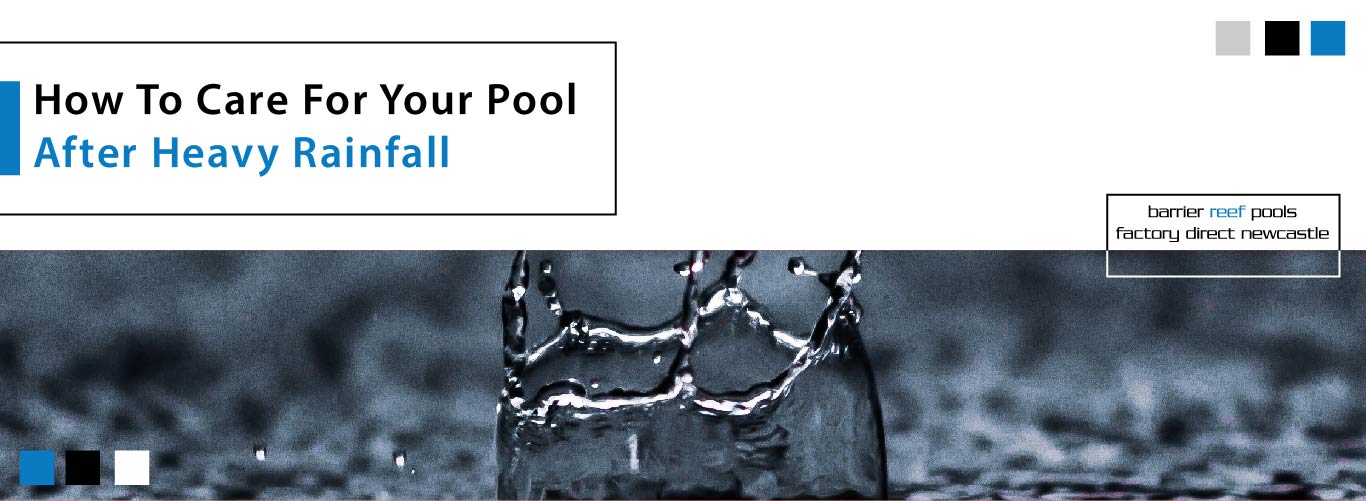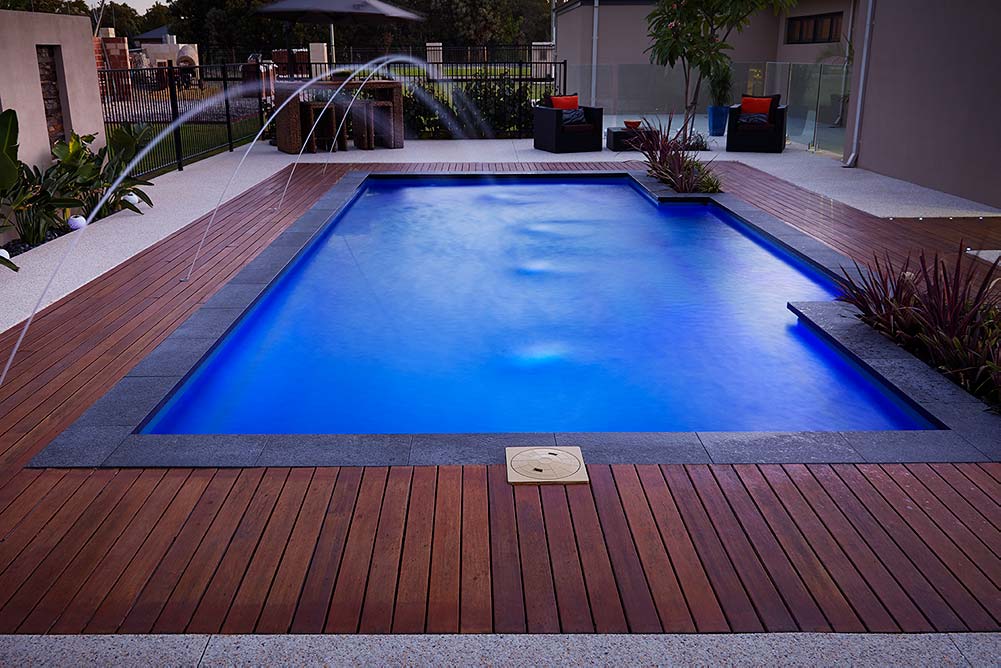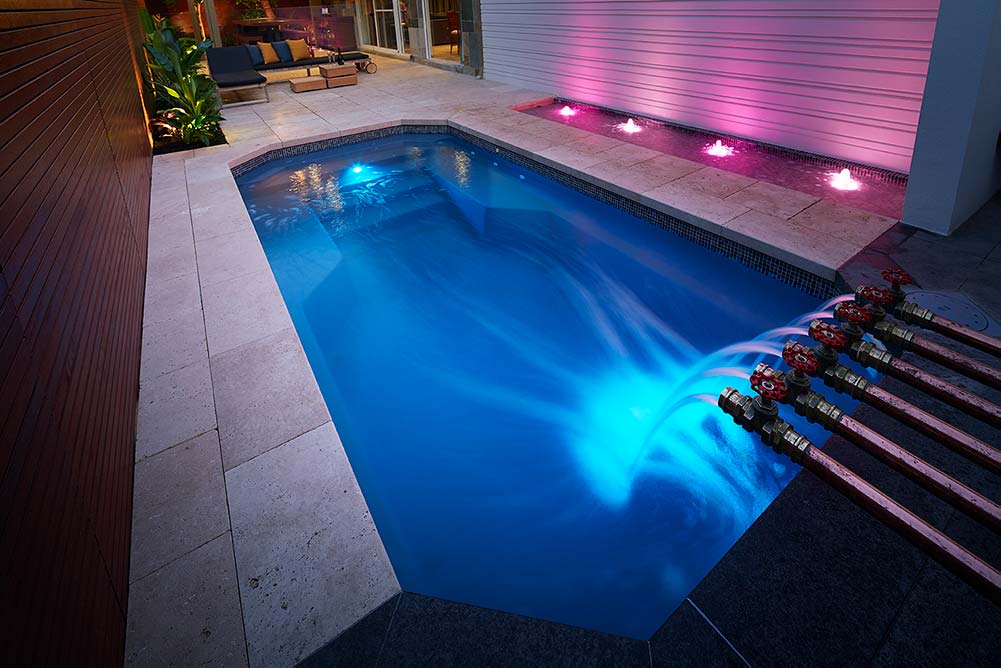How To Care For Your Pool After Heavy Rainfall
Australia’s tropical cyclone season is notorious for heavy rainfall and harsh winds – but what does this mean for your pool?
Essentially, it means you will need to keep a closer eye on your pool’s health immediately after any heavy rainfall. This is because storms can cause damage to your pool and even more havoc if that damage is left unchecked by you. We’ve brought together the top experts here at Newcastle Swimming Pools to compile a list of the easiest 5 things you should check after rainfall to ensure the longevity of your pool. Read on to beat the stormy weather!

Preparation Is Key
The 3 golden words that will save you from headache and frustrating expenses: preparation is key.
We advise you to keep a close watch on upcoming weather patterns during the storm season. The Australian government’s bureau of meteorology is a great resource to track upcoming storms with. By knowing ahead of time that a storm is heading your pool’s way, you can prevent a lot of the damage that might occur.
The best thing you can do is place a cover over your fibreglass pool. This will prevent any debris from flying into your pool from the wind. It will also shield your pool from the majority of rain that would contaminate your pool (although some will still get in.) If the upcoming storm is particularly harsh, you may also consider preemptively upping the dosage on your chlorine and/or saltwater cleaning chemicals.
Clean The Pool Free Of Debris
The most important thing you can do immediately after a storm or heavy rainfall is clean your pool free of debris. This debris will most likely take the form of organic matter, such as leaves or insects. If left unattended in large numbers in your pool, they can drastically throw off your Ph balance and even discolour your water. Worse, if leftover during the day, the sunlight could bleach leaves onto your fibreglass pool’s floor. These stains are annoying to clean and the last thing you want to worry about during rainfall repair.
Your best friends here will be your skim cleaner and pool vacuum. If you don’t have one or both, Newcastle Swimming Pools high recommends you acquire them. A skimmer can make short work of those leaves the storm brought into your pool. A vacuum can easily clean the floor of your fibreglass pool, picking up lots of dirt that you can see and even more that you can’t (hint: there will be a lot after rainfall.)

Check Ph And Sanitizer Levels
Another important step you should take is to immediately check your pools Ph and sanitiser levels as soon as the storm has passed and it’s safe to do so. Although it is easy to see the effects of organic matter (such as leaves) it’s much harder to tell by eye the effects rain will have on your chemical balance. That’s why it’s so important to measure your chemical balance.
Heavy rainfall is notorious for contaminating the water of your pool and throwing off its chlorine balance. Some common contaminants from storms that distort your pools Ph balance are:
- Leaves that have been blown into your pool by the wind
- Insects
- Dirt that has been upturned by the storm and deposited into your pool
- Raindrops
- Puddles that form around the edge of your pool and collect mud, eventually spilling into your pool

Maintain Your Water Line At A Healthy Level
Although this point may seem obvious at first, it’s easy to forget about it during the chaos of the storm.
Heavy rainfall will increase the amount of water in your pool and this can very easily cause an overflow. Once it is safe to do so, double-check that your pool has not collected more water than it needs. Ensure this by checking your pool’s water line has not increased.
If it has, then you can set your pool’s filter to its waste setting to drain some of the excess water.
Double-Check Your Equipment Is Not Damaged
The last thing on your checklist will be to check the status of your pool equipment. This includes your:
- Pool skimmer
- Pool vacuum
- Pump
- Filter
- Pool cover
It’s easy to forget that these tools can still be damaged by heavy rainfall, even when they are kept secure and undercover. But nothing is indestructible, and these tools can certainly be affected. Obviously, a skimmer can be easily replaced while your pool’s pump or filter will be more costly. Keep an eye out as well for any puddles that may have formed around your electrical equipment during the storm; this is a big safety concern that should be handled safely.
Now that you know how to properly care for your pool during a storm and heavy rainfall, we’re fairly certain you’ll be amazing at caring for your pool during the rest of the year! Be confident in your newfound knowledge and peruse our amazing range of fibreglass pools today!

